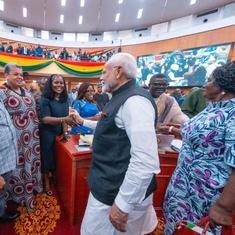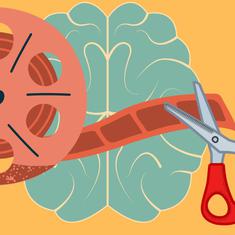Music, specifically Carnatic classical music, has long been venerated and propagated among Sri Lankan Tamils and continues to be so. It is extremely interesting that certain rituals, including the ubiquitous arangetram ceremony (initiation of a student of music or dance to the performance stage), continues to be strictly adhered to by this community, now dispersed due to the unpleasantness of history.
Every year, I get to be a part of the UK-based Milapfest’s annual summer school, a residential camp for Indian music and dance in north-western England held at the cosmopolitan Liverpool Hope University. Apart from the presence of some of the top names in Indian classical music and dance, the camp attracts a talented bunch of young people of British nationality. Many of them are of Sri Lankan descent, the generation next of a group of Sri Lankan Tamils who left their homeland following the civil war. This group in UK is among the nearly 1 million Sri Lankan Tamils dispersed across the world. Among them, Carnatic music triumphs as one of the more important identity markers.
Seeking to re-craft their lives and identities, this displaced generation has ensured that all their children, regardless of religious background, are taught Carnatic music in some form – vocal or instrumental. The rites of passage, from the vidyarambham (or the “beginning” of a course of study in music) to the arangetram, are strictly observed by them. This community has also largely been responsible for organising, sponsoring and subsidising the growing interest in Carnatic classical music in their adopted lands – often inviting reputed artistes and professionals from South India to participate. Many times, the rigour with which these programmes are held reflect a deep-rooted sense of identification with a culture that is both ancient and evolving. And in all cases, this is a culture that embraces South Indian classical music.
Powerhouse promoters classical arts
It is both refreshing and at the same time surprising to hear Tamil spoken with classical clarity (including several words that are now obsolete in common parlance in Tamil Nadu). But more importantly, it is gladdening to see the intent and respect this community shows towards Carnatic classical music and classical dance. Separated by several thousand miles, but equally assiduous, are similar communities in Australia, Canada, pockets of the United States and all over continental Europe. The way they have rebuilt their lives in the face of hardships and yet preserved music as an integral identity marker is not only moving, but a living testament to tradition.
In this context, there are individuals too, who have risen above challenges and emerged as powerhouses in promoting classical arts in local communities with tremendous impact. Aravinth Kumarasamy, of Apsaras Arts Singapore, who works closely with the National Arts Council of Singapore, has been responsible for a mini cultural revolution in the island nation. An accomplished veena player and dancer himself, he has taken on the mantle of organising several festivals that promote and conceptualise Carnatic music, including reinvigorating it through innovative uses in dance and theatre. He is now spearheading the proliferation of music and dance education in Southeast Asia.
On a similar footing is the work of Anandavalli and her Lingalayam School of Dance, which has earned the celebrated dancer national recognition in her adopted home of Australia. Sivasakthi Sivanesan in the UK and Sivaganga Sahathevan in Melbourne are also prime examples of the live force that is now keeping Carnatic music vibrant in their respective communities. This, of course, is a small list of names. There are many more examples. All of them tremendously inspiring.
Nirmanika by Apsaras Arts
Carnartic Vocal Arangetram – Sivakami Sibi
In a context where extremism is trying to destabilise democracy, and where vested interests are using geopolitical games to divide people, the story of migrants who survived civil war and re-established a life celebrating the power of music is an important one in the narrative of world culture. It deserves to be noticed. Equally, in a context where we are now being forced to subscribe to the notion of what is and what isn’t “Indian culture”, the triumph of a group of individuals from our neighbouring nation in preserving South Indian classical music and dance sings a bold and inspiring raga indeed.










